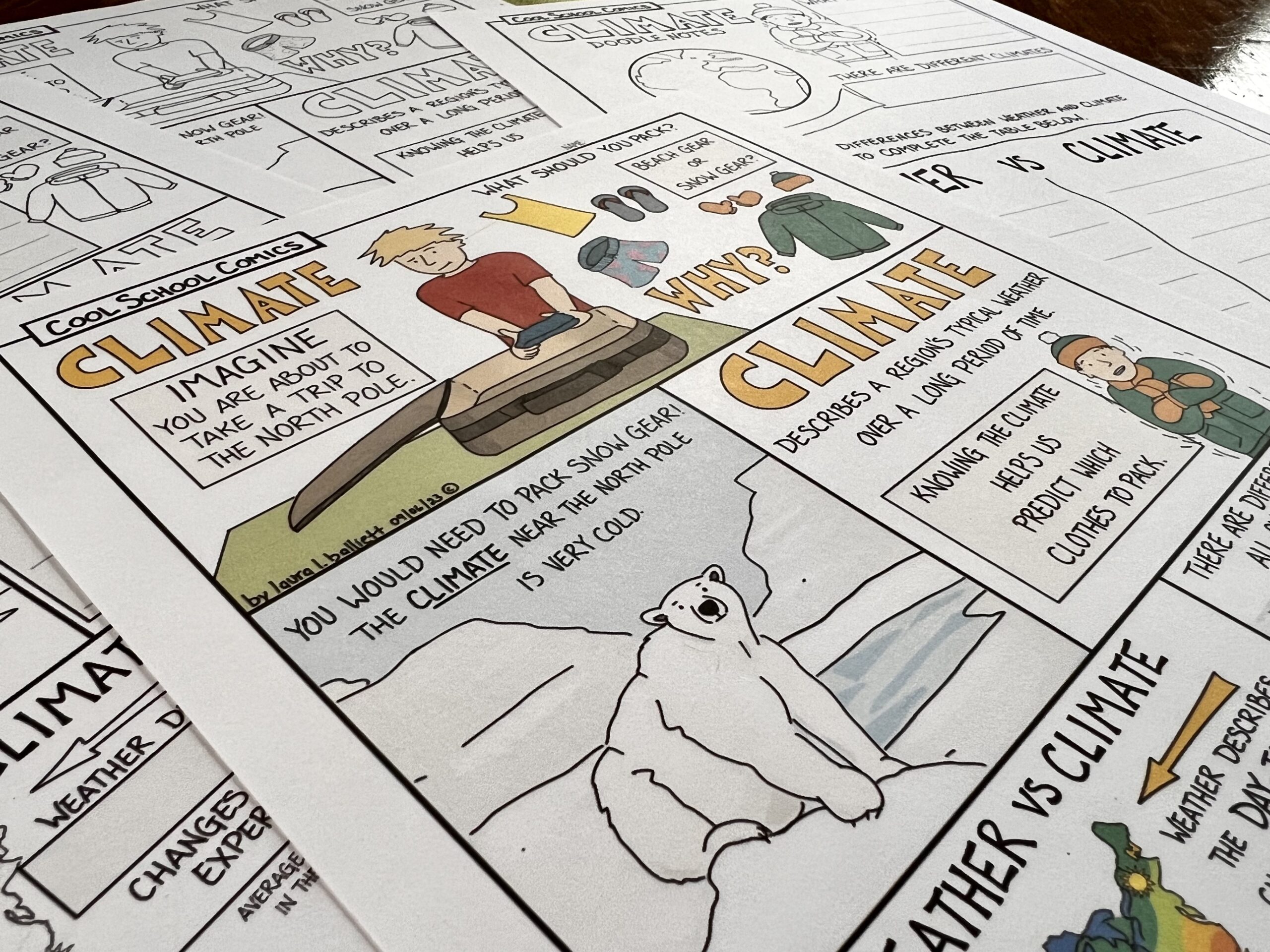A Weather and Climate Lesson Plan They’ll Love

Exploring Climate and Weather
Teaching climate and weather to third-grade students can be an exciting and enriching experience. At this age, children are naturally curious about the world around them, making it the perfect time to create a weather lesson that introduces them to the fascinating concepts of climate and weather in a FUN and engaging manner.
Climate vs Weather
Before diving into the specifics of climate and weather, it’s crucial to clarify the difference between the two concepts. Start by explaining that weather refers to the day-to-day conditions we experience, such as sunny, rainy, or windy days. In contrast, climate refers to the long-term patterns of weather in a particular area.
The Journey with a Globe
Begin your climate and weather journey with a globe or world map. Show your students where they are located and help them understand the concept of latitude. Discuss how places near the equator are generally warmer, while those closer to the poles are colder.
Comic-Style Weather Lesson
The Climate comic targets these two aspects of the lesson through captivating images and examples. Students are prompted to think about what they should pack to travel to remote regions of the planet and consider how they know these items are appropriate. The comic also prompts learners to think about their own region of the globe and consider the weather patterns they experience.
Interactive Weather Charts
Visual aids are incredibly effective for many ages. Create interactive weather charts with Velcro or magnets to represent different weather symbols. Encourage students to update the chart daily as they observe and report the weather conditions. This activity helps them understand the variability of weather.
Climate Zones
Introduce students to the concept of climate zones by discussing the types of climates found around the world, such as tropical, arctic, desert, and temperate. Explore how latitude, proximity to water bodies, elevation, and wind patterns influence these climate zones.
Climate Art Projects
Encourage creativity with climate-themed art projects. Students can create climate dioramas or paint scenes depicting different climate zones. This hands-on approach not only reinforces learning but also allows them to express their understanding in a creative way.
Aspects of This Comic-Style Weather Lesson
Using comics to teach about weather can be a valuable pedagogical tool for making weather-related concepts more accessible, engaging, and memorable for students. It leverages the power of visual storytelling, simplifies complex information, and fosters creativity, making it an effective approach to enhance the learning experience.
The products created by Cool School Comics are far more than just comics. Each lesson is specially crafted to make it EASY for you to work comics into your curriculum. While the Climate and Weather Lesson certainly has an eye-catching content comic, it also includes a variety of supplementals to help you solidify student understanding.

Guided Notes
Great for interactive notebooks, the guided notes allow students to take notes as you teach the content.

Colorful Content
Aligning with NGSS Standards, the content comic illustrates the difference between weather and climate.

Doodle Notes
Easy-to-print and fun to color, the Doodle Notes allow students the opportunity to show what they know using their art skills.
Download the Climate and Weather Lesson today.
Watch your students light up with excitement when you turn off the screens and hand them a vivid comic. Comics make reading science FUN.










